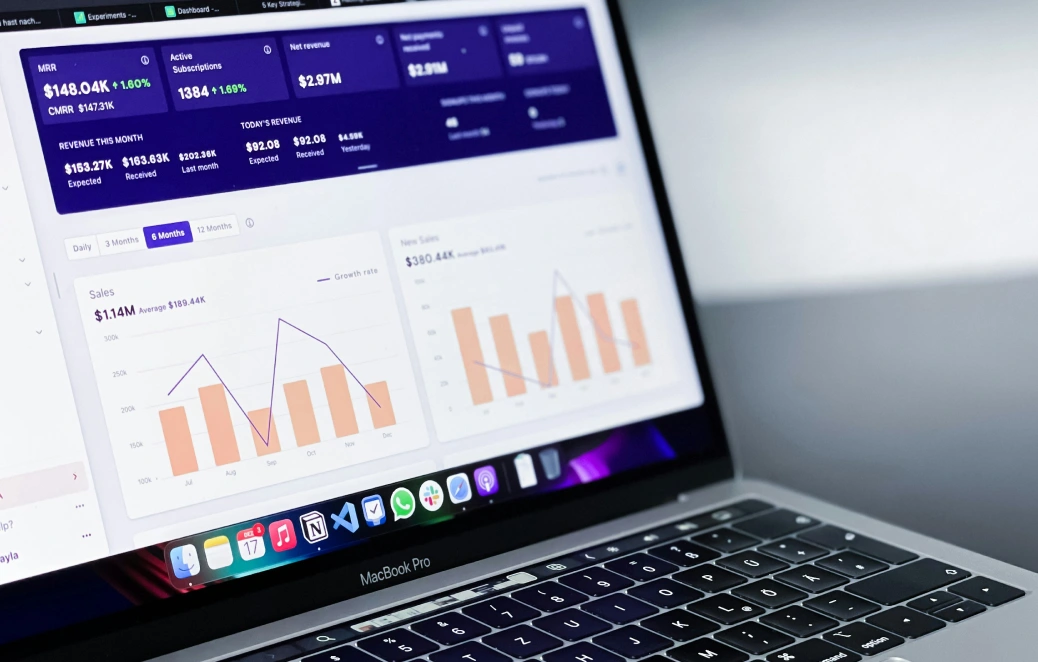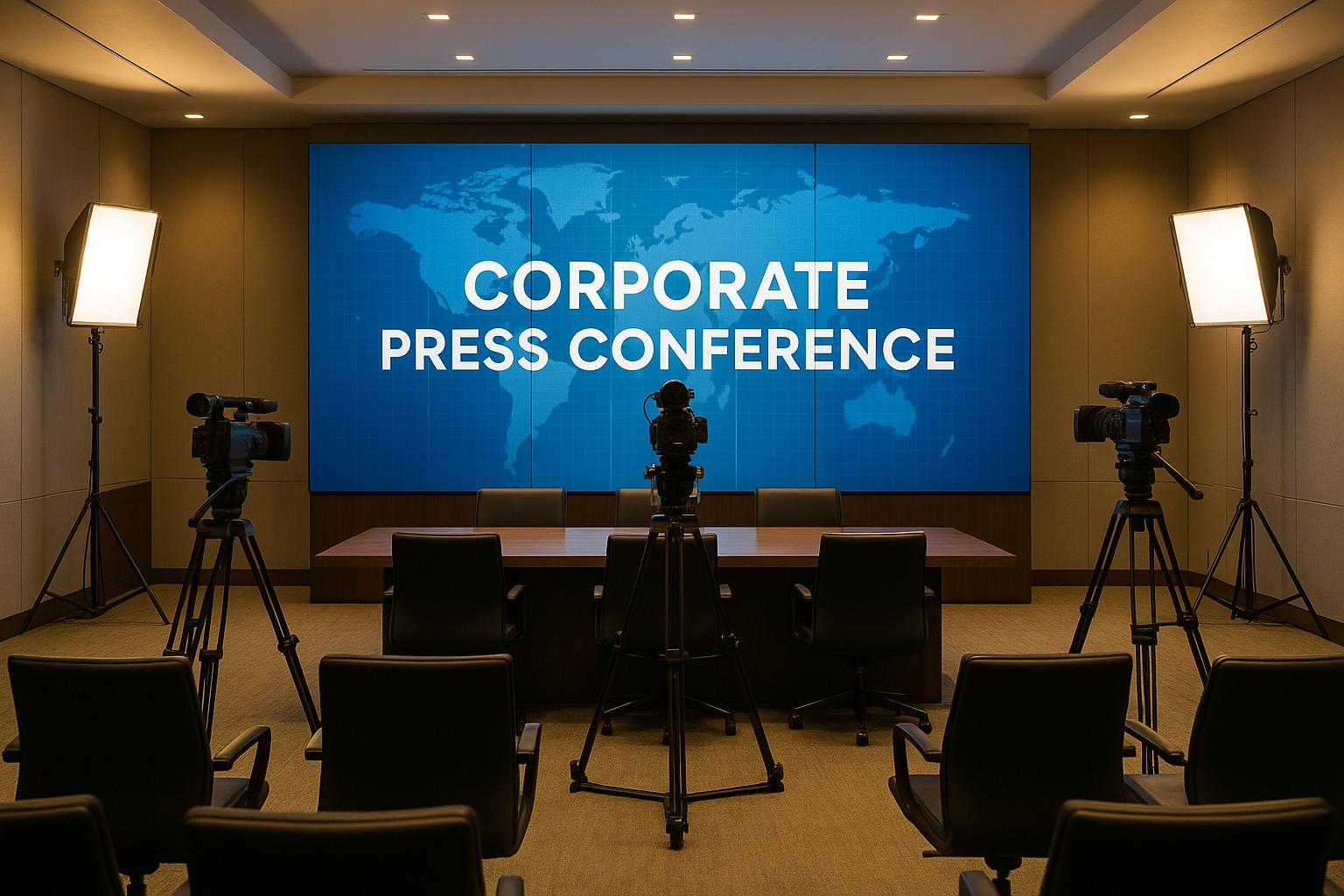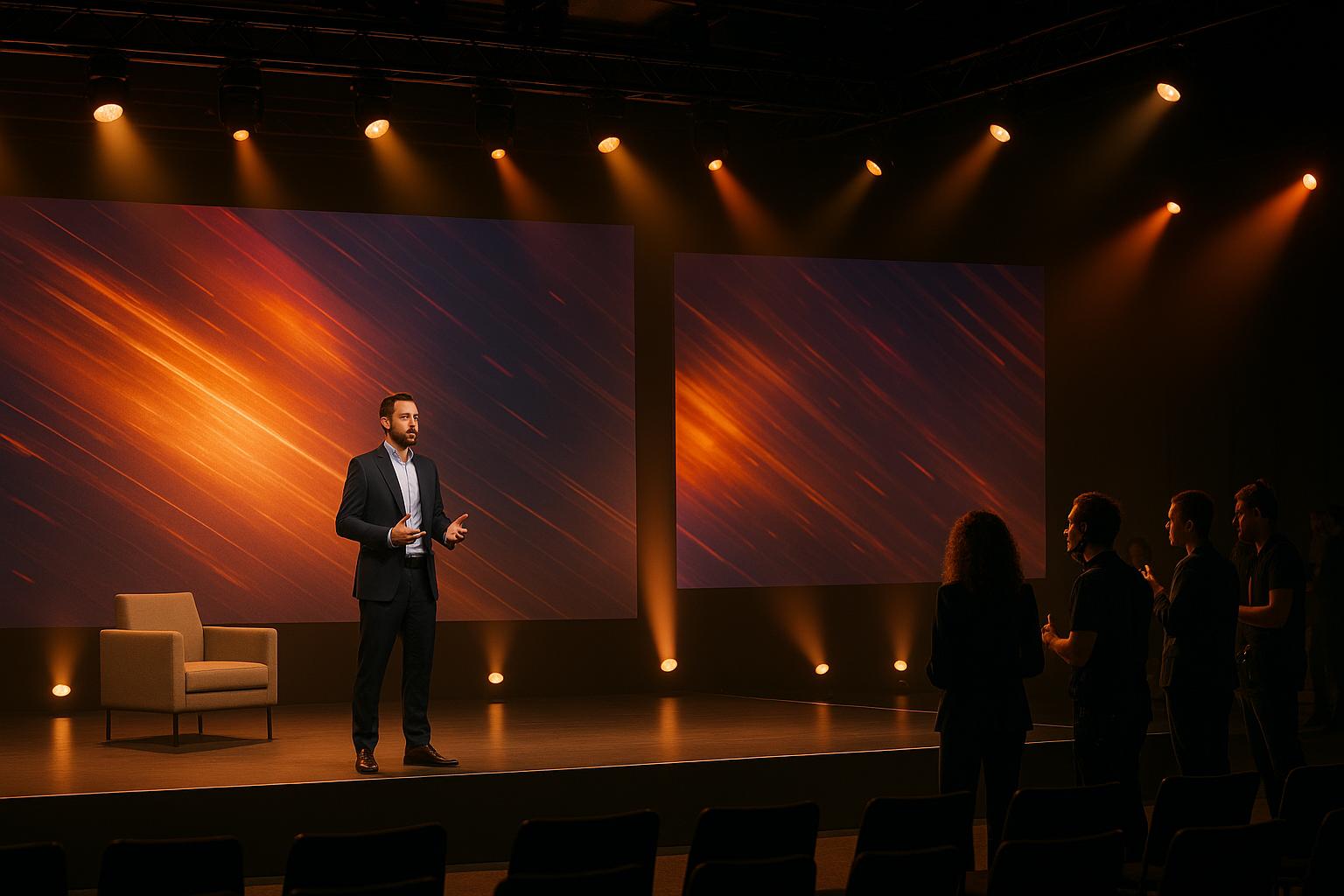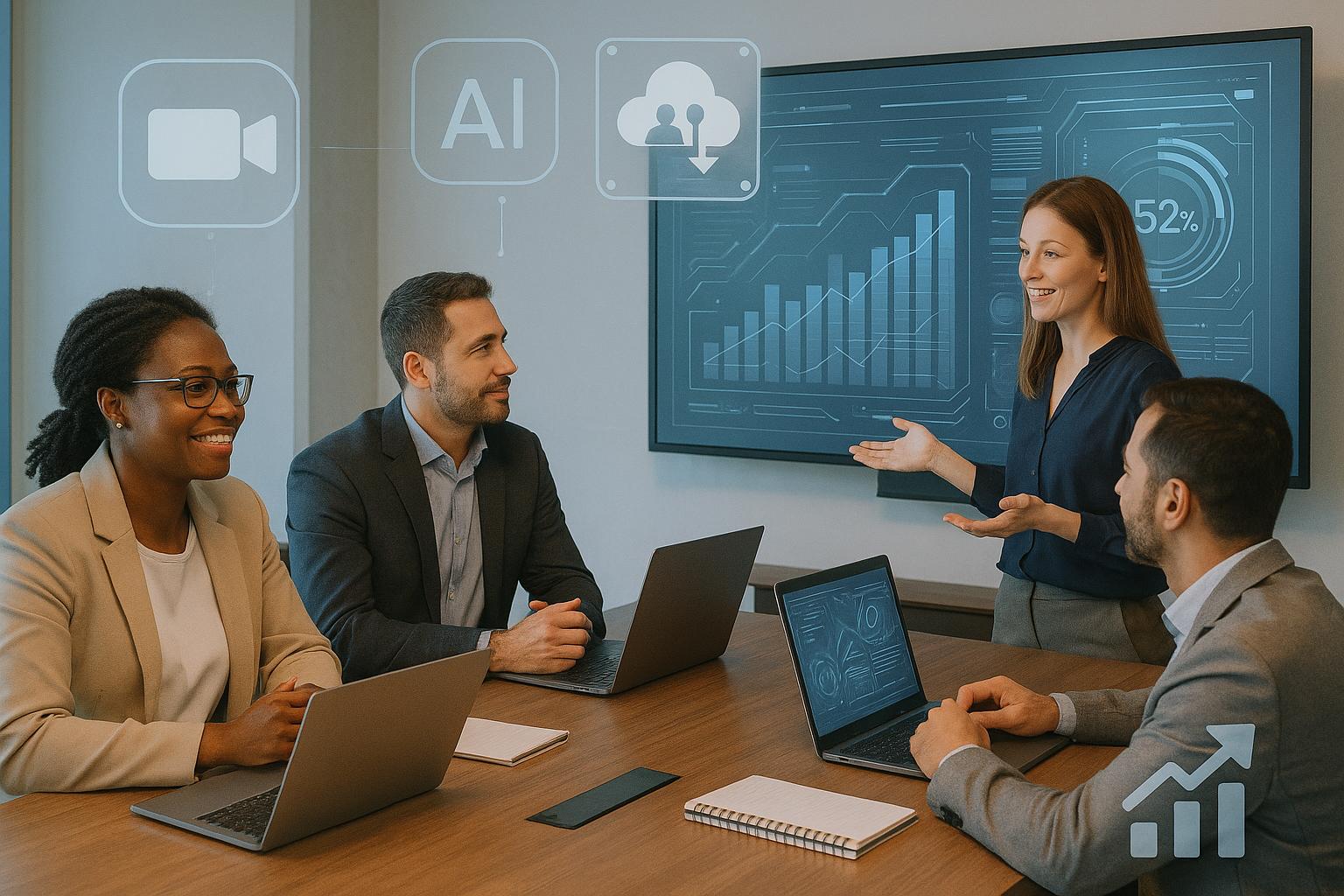Guide To Planning Your Next Leadership Conference

Chief Executive Officer

Planning a leadership conference? Here's what you need to know:
Organizing a leadership event requires clear goals, precise planning, and attention to detail. From selecting the right venue to creating an engaging agenda, every decision impacts the experience and outcomes for attendees. This guide breaks down the essentials:
- Set Clear Objectives: Align your goals - like team alignment, innovation, or networking - with your organization’s priorities.
- Know Your Audience: Tailor content to executives, managers, or emerging leaders, ensuring sessions meet their needs.
- Plan Logistics Carefully: Choose accessible venues with reliable tech, flexible spaces, and compliance with regulations.
- Use Technology Wisely: Leverage tools for registration, feedback, and hybrid event setups to simplify processes and boost engagement.
- Create a Balanced Agenda: Mix keynotes, panels, and workshops to keep energy levels high and encourage participation.
- Focus on AV Quality: Professional-grade sound, lighting, and streaming are critical for a smooth experience.
Post-event feedback and analytics are key. Use attendee surveys, engagement data, and business metrics to refine future events and measure ROI. With thoughtful preparation, your leadership conference can drive meaningful outcomes for your organization.
Go behind the scenes how to plan a successful conference
Setting Objectives and Success Metrics
Establishing clear objectives is the foundation for making informed decisions throughout the conference planning process. Without well-defined goals, your choices - like selecting venues or inviting speakers - risk becoming unfocused and ineffective.
Setting Clear Goals
Your conference goals should align with your organization's broader priorities, whether that’s fostering professional development, enhancing team cohesion, sparking innovation, or building stronger networks. Each objective shapes the event’s direction and ensures it meets specific organizational needs.
For instance, team alignment can be a critical focus for companies undergoing major changes, such as rapid growth or mergers. Leadership conferences can help managers stay in step with shifting priorities, creating a unified vision across the organization.
When innovation is the goal, consider designing sessions that encourage creative problem-solving. Activities like hackathons or design-thinking workshops can bring leaders together to tackle real-world challenges and generate new ideas.
Networking is another key objective, particularly in large organizations where leaders may not often interact. Strengthening these connections can lead to better collaboration and pave the way for successful cross-functional initiatives.
Rather than trying to achieve too many goals at once, it’s often more effective to focus on two or three priorities. This approach allows for more tailored content and clearer success metrics, making it easier to evaluate the conference’s impact.
Identifying the Target Audience
Understanding your audience is essential for shaping every aspect of the event, from the agenda to the venue setup. Different groups - executives, managers, and emerging leaders - have unique needs, and your content should reflect those differences.
- Senior executives prefer high-level discussions that tie directly to business outcomes. They value networking with peers, polished presentations, and concise schedules that respect their time.
- Middle managers benefit from practical sessions focused on skills they can implement immediately, such as managing teams, improving processes, or solving day-to-day challenges. They often appreciate interactive workshops and longer, hands-on sessions.
- Emerging leaders look for opportunities to expand their understanding of leadership. They’re drawn to mentorship programs, case studies, and interactive learning activities that offer career development insights.
For events with a mixed audience, consider creating separate tracks or breakout sessions tailored to different experience levels. At the same time, unite everyone for keynotes or networking opportunities to maintain a cohesive event atmosphere.
Geography can also influence planning. Leaders from different regions may bring unique perspectives shaped by local market challenges, regulations, or cultural norms. By factoring these considerations into your planning, you can ensure the content resonates with a diverse audience and informs your success criteria.
Creating Measurable Success Criteria
To measure success effectively, start by defining metrics that directly reflect your goals. Combine attendee satisfaction scores with real-time engagement data and post-event evaluations to get a comprehensive view of the event’s impact.
Engagement metrics during the event are particularly useful. Track session attendance, Q&A participation, and involvement in interactive activities. Many conference apps now offer detailed analytics, such as session ratings, networking interactions, and content downloads, which can provide valuable insights.
For knowledge retention and application, consider pre- and post-event assessments or follow-up surveys conducted weeks after the event. These tools can reveal how well attendees are applying what they’ve learned. Some organizations also use 360-degree feedback to evaluate improvements in leadership skills over time.
When it comes to business impact, look for metrics that tie the conference to broader organizational outcomes. This might include improvements in employee engagement, better retention rates among attendees, or progress on strategic initiatives discussed at the event. While these results may take time to surface, they offer a clear picture of the event’s return on investment.
Networking success can be measured by asking attendees about new relationships or collaborations formed during the event. Some organizations track cross-departmental projects or partnerships that emerge as a result of these connections.
Set realistic benchmarks based on your organization’s current performance and industry norms. While perfection isn’t attainable - especially with diverse attendee perspectives - aim for meaningful improvements. Document your measurement plan before the event, detailing how you’ll collect and analyze data. This preparation ensures you gather the right information and can use it to refine future events effectively.
Venue Selection and Logistics
The venue you choose for your leadership conference sets the stage for the entire event. It shapes how attendees engage, feel, and experience the day. Beyond just finding a space big enough, you’ll need to think about technical needs, accessibility, and logistical details that align with your goals.
Choosing the Right Venue
When planning for capacity, don’t just focus on the number of attendees. Think about extra room for movement, networking, and unexpected guests. For example, if you’re expecting 200 people, pick a venue that can comfortably handle more, along with space for registration, meals, and breakout sessions.
Technical infrastructure is a must-have for leadership events. Reliable, high-speed Wi-Fi is non-negotiable - it should support streaming, app usage, and presentations all at once. Look for venues with built-in AV systems, plenty of power outlets, and on-site tech support. Many modern venues now offer advanced internet packages with guaranteed bandwidth, which is especially important for hybrid or live-streamed events.
Accessibility compliance is crucial, especially for US-based events under the Americans with Disabilities Act (ADA). Make sure the venue has wheelchair-accessible entrances, restrooms, and meeting spaces, as well as assistive listening systems, proper lighting, and accessible parking. Request documentation to confirm compliance.
Location matters when it comes to attendance and engagement. If you’re hosting people from across the country, a venue near major transportation hubs is ideal. Downtown locations might offer better networking opportunities with nearby restaurants and entertainment, while suburban venues often have more parking and lower costs. Think about your audience - executives may prefer upscale hotels, while younger professionals might enjoy modern, creative spaces. The right location should enhance both attendee comfort and your event’s objectives.
Room flexibility is another key factor. You’ll want a venue that can adapt to different session styles, from theater seating for keynotes to smaller setups for workshops. Features like movable walls can help adjust spaces based on session turnout. Before committing, visit the venue to check acoustics, sightlines, and lighting at different times of day. A flexible setup ensures a dynamic and engaging environment for all types of sessions.
Considering Hybrid and Virtual Options
If your conference includes virtual components, hybrid capabilities are essential for reaching a broader audience.
Hybrid event capabilities require more than just a good internet connection. You’ll need professional-grade streaming equipment, multiple camera angles, and separate audio systems for in-person and virtual attendees to ensure everyone has a seamless experience.
Technology for hybrid events should go beyond basic streaming. Look for venues that support interactive tools like wireless presentation systems, real-time polling, and displays that work effortlessly for both in-person and online participants. Some venues even offer built-in streaming studios with professional lighting and backdrops designed for hybrid events.
Remote engagement takes planning. Multiple camera setups and skilled technicians are necessary to capture not just the speaker but also audience reactions, creating a more interactive experience for virtual attendees.
Costs for hybrid events can vary significantly. While in-person events usually have higher per-attendee expenses, virtual options can be more cost-effective. Striking the right balance between the two requires careful budgeting. Consulting experienced providers can help you navigate the cost differences and plan accordingly.
Logistical Details for US-Based Events
Once you’ve sorted out the venue and tech needs, it’s time to dive into the logistics specific to US-based events.
Regional regulations can differ depending on the city or state. Some locations may require permits for large gatherings, while others enforce strict fire safety or security standards. Research these requirements well in advance - ideally at least 90 days before your event - to avoid last-minute surprises.
Transportation accessibility is another important consideration. Venues near highways, public transit, or airport shuttles make it easier for attendees to arrive on time. In urban areas with strong public transportation, parking may not be a big issue, but in suburban or rural locations, you’ll need to ensure there’s ample parking available.
Dietary and cultural considerations are essential for creating an inclusive event. Offer catering options that accommodate common dietary needs, such as vegetarian, vegan, gluten-free, and kosher meals. Additionally, check for any major cultural or religious observances that could affect attendance, and consider incorporating regional culinary touches to make the menu more appealing.
Weather planning is a must, especially in areas prone to extreme conditions. If your event is in a warm climate, ensure there’s plenty of air conditioning and hydration stations. For colder regions, plan for potential travel delays. In hurricane-prone areas or during snowy seasons, having flexible cancellation policies or backup dates can save you from major disruptions.
Security has become increasingly important, particularly for high-profile events. Many venues offer professional security services tailored to your needs. Work with experts to address both physical and digital security, ensuring your plans align with the venue and the profile of your attendees. This added layer of preparation helps create a safe and worry-free environment for everyone involved.
Creating an Effective Agenda
An agenda isn't just a schedule - it's the backbone of your event. It shapes the experience, sets the tone, and ensures attendees leave feeling inspired and prepared. Crafting an agenda that balances variety, engagement, and flow is key to making a lasting impact.
Balancing Keynotes, Panels, and Workshops
Once you've ironed out the logistical details, it's time to focus on structuring your sessions. A proven method for leadership conferences is the 70-20-10 model: dedicate around 70% of the schedule to impactful keynotes and panels, 20% to interactive workshops, and 10% to networking and breaks. This approach aligns session types with your event's goals while keeping energy levels high.
- Keynotes: These sessions, typically 45–60 minutes with time for Q&A, are the centerpiece of your agenda. Position your most dynamic and influential speakers here to set the tone and deliver key messages.
- Panels: Lasting 60–75 minutes, panels are great for mid-morning or mid-afternoon when attendees are alert. Structure them around specific, focused questions, and include audience Q&A to keep engagement strong.
- Workshops: At 90 minutes each, workshops are best for smaller groups (25–50 participants) to encourage active participation. Schedule these during late morning or early afternoon to provide a change of pace.
To keep attendees energized, intersperse 15-minute breaks, a longer 60–90-minute lunch, and a 30-minute coffee break throughout the day. This balance ensures participants stay refreshed and ready to engage.
Using AI Tools for Scheduling
AI-powered tools can make the process of creating a seamless agenda much easier. These platforms can juggle multiple factors - like speaker availability, room capacity, and attendee preferences - all while optimizing the flow of your event.
For example, AI tools can:
- Avoid scheduling conflicts: They quickly identify overlapping sessions or double-booked speakers and suggest alternatives to maximize attendance.
- Balance session types: By analyzing your schedule, these tools ensure a good mix of technical and soft-skill topics, avoiding monotony.
- Adjust dynamically: If a speaker cancels or a room needs to change, AI can reorganize the schedule in real time, minimizing disruptions.
- Match sessions to attendees: By analyzing registration data and stated interests, AI can predict which sessions will draw the biggest crowds and adjust room assignments to prevent overcrowding.
This level of precision allows you to focus on delivering a great experience while leaving the time-consuming logistics to technology.
Working with Speakers
Once your agenda is set, managing your speakers effectively is crucial to maintaining a smooth flow. Clear communication, thorough preparation, and ongoing support are essential to ensure your speakers shine.
- Start early: Begin selecting speakers 4–6 months before the event. Prioritize those who combine expertise with the ability to connect with an audience. Ask for recent video samples to gauge their presentation style.
- Confirm technical needs: About 8 weeks before the event, send a detailed speaker packet covering AV requirements, preferred presentation formats, and any special equipment requests. Whether they need a wireless microphone or a podium mic, addressing these needs early prevents last-minute issues.
- Coordinate content: Share high-level topic summaries with speakers to avoid overlap. If two speakers have similar themes, work with them to differentiate their approaches or divide the content effectively.
- Schedule rehearsals: Plan virtual run-throughs 1–2 weeks before the event, and, if possible, hold in-person rehearsals at the venue. This is especially important for keynote speakers or those using complex technology.
- Provide comprehensive support: Make sure speakers have clear instructions for arrival, parking, and on-site contacts. Assign a point person for each keynote speaker and ensure workshop facilitators can easily access technical support.
Finally, always prepare for the unexpected. Have backup speakers ready for critical sessions and maintain relationships with local experts who can step in if needed. For virtual or hybrid events, double-check all technical setups and test connections multiple times before going live. A strong contingency plan ensures your agenda stays on track, no matter what challenges arise.
sbb-itb-ae35a94
Audiovisual and Event Production
The quality of your audiovisual setup can turn a good conference into an unforgettable experience. A professional AV system doesn’t just support your content - it amplifies it, creating an environment where attendees can focus on learning and networking without distractions. On the other hand, technical hiccups can derail even the most meticulously planned sessions. Let’s dive into the essential AV components that can elevate your leadership conference and ensure everything runs smoothly.
Core AV Requirements
Every successful leadership conference starts with a solid AV foundation. Sound systems are a top priority - attendees should never struggle to hear a keynote or miss key points during a panel discussion. Wireless microphones with backup frequencies ensure clear, uninterrupted audio while giving speakers the freedom to move around the stage.
Lighting design plays a crucial role in setting the right atmosphere. Thoughtfully placed lights can highlight the stage, reduce eye strain, and adapt to the needs of each session. Intelligent lighting systems allow you to dim the room for presentations while keeping speakers well-lit and visually engaging.
Video production and displays have become indispensable, particularly for larger venues. High-resolution screens and professional video setups ensure that every attendee, whether seated at the front or the back, has a clear view. For even greater accessibility, consider adding multiple display points throughout the venue. Additionally, professional-grade streaming ensures a smooth experience for virtual attendees, with crystal-clear visuals and reliable coverage.
Live streaming capabilities are no longer optional; they’re a necessity. Broadcasting your sessions allows you to expand your reach, engage remote audiences, and create valuable recordings for post-event use. A professional streaming setup, featuring multiple camera angles and integrated feeds, ensures your event looks polished and runs seamlessly.
Scenic design elements - like custom backdrops, branded stage sets, and professional staging - add a layer of sophistication. These visual details not only enhance the overall atmosphere but also create Instagram-worthy moments that extend your event’s visibility through social media.
With these technical essentials in place, the next step is finding the right partner to bring your vision to life.
Working with Professional Providers
Handling AV logistics alongside event planning can be overwhelming. That’s where professional providers come in. Companies like Corporate Optics specialize in delivering comprehensive AV solutions tailored for leadership conferences. From initial planning to post-event analysis, they manage every detail, ensuring that your technical setup aligns with your event goals.
Professional AV providers bring expertise that basic in-house setups or standard rentals can’t match. They conduct site surveys to identify potential challenges, design custom solutions based on your venue and audience, and provide on-site technical staff to address any issues in real time. This hands-on approach keeps your program running smoothly.
Speaker support services are another major advantage. For leadership events, where executives and thought leaders are often the focal point, these services handle everything from microphone fittings to presentation uploads and technical rehearsals. This allows speakers to focus entirely on their message, not the logistics.
Additionally, post-event analytics provide valuable insights into your event’s performance. Providers can track engagement levels, assess technical execution, and deliver data that informs future planning. These insights not only help justify your budget but also enhance the overall quality of your events moving forward.
Once you understand the value of professional services, it becomes easier to evaluate your AV setup options.
Comparing AV Setup Options
Choosing the right AV setup depends on your budget, venue size, and the expectations of your audience. Here’s a breakdown of the main options:
- A basic AV setup includes standard sound systems, basic lighting, and simple projection capabilities. This is suitable for smaller events with straightforward needs.
- Advanced AV configurations offer custom lighting, multiple camera angles, and integrated streaming solutions. These setups work well for mid-size conferences aiming for a polished, professional feel.
- Hybrid AV solutions combine in-person and virtual elements, incorporating interactive tools and broadcast-quality production. This option is ideal for events that need to engage both physical and remote audiences.
Ultimately, the right AV approach depends on your event’s goals and the experience you want to deliver. A well-matched setup not only meets your immediate needs but also enhances the overall impact of your leadership conference, leaving a lasting impression on attendees.
Engaging Attendees and Improving Experiences
Hosting a successful leadership conference isn’t just about delivering high-quality content. Attendees today expect more - interactive sessions, smooth technology integration, and thoughtful planning that keeps them engaged. By combining easy-to-use digital tools, creative engagement strategies, and solid event fundamentals, you can turn a standard conference into an experience that leaves a lasting impact. These ideas work hand-in-hand with the planning and AV production elements discussed earlier.
Digital Tools for Registration and Feedback
Streamlining the registration process is a simple way to make a strong first impression. Use platforms that offer features like QR code scanning, mobile check-in, and quick badge pickup to cut down on wait times and create a professional atmosphere right from the start.
Collecting real-time feedback is another essential step. Digital tools help you gather immediate insights, such as session ratings, speaker evaluations, and overall event sentiment. This allows you to make quick adjustments during the conference and ensure attendees feel heard.
Mobile event apps act as a central hub for attendees, offering schedules, speaker bios, networking opportunities, and live updates. When promoted effectively, these apps often see high adoption rates and provide valuable data on session popularity and attendee behavior.
The secret to success with digital tools? Keep it simple. Choose platforms that are easy for both staff and attendees to use, and always have backup systems in place. Test everything beforehand, from connectivity to device compatibility. Once you’ve nailed these basics, advanced AI tools can take your event’s engagement to the next level.
Using AI for Audience Engagement
AI doesn’t just enhance your digital tools; it adds a whole new layer of personalization and interactivity. AI-powered polling and Q&A systems can process audience questions in real time, group similar topics, and even suggest follow-ups. For example, Corporate Optics uses AI to pinpoint trending topics and streamline audience interactions, ensuring that sessions address the most pressing concerns.
AI also shines when it comes to networking. Intelligent matchmaking features pair attendees based on shared interests, roles, or goals, helping them make meaningful connections.
Personalized content recommendations are another game-changer. AI can guide attendees through complex schedules, suggesting sessions, workshops, or networking opportunities tailored to their specific interests - especially helpful at larger events.
Real-time sentiment analysis is a powerful tool for keeping sessions engaging. By monitoring audience reactions, organizers can adjust their approach on the spot, whether it’s adding interactive elements or shifting the focus of a discussion.
The best part? AI works quietly behind the scenes, enhancing the experience without adding complexity for attendees or speakers. When combined with thoughtful planning, these tools can leave a lasting impression on everyone involved.
Event Basics: Catering, Security, and Decor
While technology and AI are exciting, the fundamentals of event planning - like catering, security, and decor - are equally important for creating a memorable experience.
Catering should cover all bases, including meals, snacks, and dietary restrictions such as vegetarian, vegan, gluten-free, or allergy-related needs. To encourage networking, consider options like standing receptions or assigned seating at round tables. Avoid long buffet lines by offering multiple serving stations or pre-plated meals during peak times.
Security is another crucial element. Professional teams should handle access control, VIP protection if needed, and discreet monitoring of sensitive areas. Make sure security staff are fully briefed on the event schedule, key personnel, and protocols for managing disruptions.
Decor and branding tie everything together, creating photo-worthy moments that boost your event’s visibility on social media. Focus on high-traffic areas like registration desks, main stages, and networking lounges. Consistent branding across signage, backdrops, and digital displays reinforces your event’s professional image and naturally encourages attendees to share their experiences online.
Don’t overlook comfort, either. Climate control, proper lighting, accessible seating, and convenient power outlets can make a big difference in how attendees feel throughout the day. By blending digital innovation with thoughtful on-site details, you can create an environment that’s not only engaging but also comfortable and welcoming - an event people will remember for all the right reasons.
Post-Event Analytics and Continuous Improvement
Post-event analytics transform conferences into opportunities for ongoing refinement. While it’s tempting to bask in the success of a well-executed event, the real value lies in dissecting what worked, what didn’t, and how to make the next one even better. Just as careful planning and solid AV setups ensure an event runs smoothly, thorough post-event analysis ensures you’re constantly improving. This process turns a single event into a stepping stone for stronger leadership development initiatives.
Collecting and Analyzing Feedback
Gathering feedback is most effective when done quickly and thoughtfully. Research shows that surveys sent within 24 to 48 hours after an event are 40% more accurate, yet an astonishing 77% of professionals skip using surveys altogether. Keep your surveys concise - aim for a completion time of 5 to 10 minutes. Use a mix of rating scales, multiple-choice questions, and a handful of open-ended prompts. On average, response rates hover between 20% and 30%, but you can boost participation by personalizing the survey. Address attendees by name and reference specific sessions - they’ll feel valued, and response rates can jump by up to 48%.
Don’t stop at digital surveys. Add a human touch by encouraging staff to collect informal feedback during breaks or meals. Set up anonymous suggestion boxes in high-traffic areas, and monitor social media for event hashtags and mentions to capture unfiltered reactions. Advanced AI tools can also help analyze open-ended feedback, identifying sentiment and recurring themes, so you can focus on the most pressing areas for improvement.
Using Post-Event Analytics
Once feedback is collected, the next step is turning that data into actionable insights. Analytics platforms can combine numbers - like session attendance and engagement scores - with qualitative input to paint a full picture of your event’s impact. These insights help you spot patterns, such as recurring technical issues or declining engagement during specific times, that might need attention.
Making changes based on this feedback can have a measurable impact. For example, implementing attendee-driven improvements can increase guest satisfaction by 15% and cut operational complaints by 30%. Additionally, organizations that respond to feedback within 48 hours see a 6-point increase in their Net Promoter Score, while delays can lead to a 2.1% annual rise in customer churn. Use this data to double down on what’s working - whether it’s a specific speaker, session type, or format - and replicate those successes in future events.
Reporting Results and Planning Ahead
Once you’ve gathered and analyzed your data, it’s time to share your findings in a way that drives action. Tailor your reports to suit your audience: focus on ROI for executives and operational details for planners. Use clear, US-style formatting for clarity - for instance, include commas in large numbers (e.g., 1,250 attendees), percentages with one decimal place (e.g., 87.3% satisfaction rate), dollar amounts with currency symbols (e.g., $15,000 budget variance), and dates in MM/DD/YYYY format.
Closing the feedback loop is critical. When companies share how they’ve acted on feedback, they see a 2.3% annual drop in customer churn, and attendees are 21% more likely to participate in future surveys. Send follow-up emails highlighting specific changes inspired by attendee input, and reference these improvements in your event marketing. Develop a clear action plan that prioritizes fixes based on their impact and feasibility. For example, address recurring issues like AV problems immediately, and use your data to justify larger changes, such as expanding hybrid options or improving networking opportunities. This approach ensures your events keep evolving - and your attendees keep coming back.
Conclusion: Delivering a Successful Leadership Conference
Creating a successful leadership conference hinges on thoughtful planning, skilled execution, and the smart use of technology - transforming an ordinary gathering into a launchpad for leadership growth.
The groundwork begins with early and strategic planning. Set clear, measurable goals - whether it’s ensuring high attendee satisfaction or fostering meaningful networking opportunities. These objectives will shape every decision you make. Did you know that over 70% of event planners now use digital registration and engagement tools to streamline operations? These tools not only handle logistics but also enhance the attendee experience from sign-up to post-event follow-ups.
Another cornerstone is professional audiovisual support. Even the most engaging content can lose its impact if technical glitches disrupt keynotes or workshops. Partnering with experienced AV teams ensures your event runs smoothly, with experts ready to troubleshoot any issues on the spot.
Once the basics are in place, advanced tools like AI can take your conference to the next level. AI-powered scheduling platforms, for example, can match session times with speaker availability and attendee preferences. Real-time analytics offer insights into engagement patterns, helping you make data-driven adjustments. One summit even reported a 30% increase in attendee satisfaction and a 20% drop in logistical problems by leveraging these tools.
Hybrid formats are another game-changer, boosting attendance by 30% in 2024 alone. This format allows you to connect with executives who may not have been able to attend in person while maintaining the personal touch of face-to-face networking. Together, these strategies create a conference experience that leaves a lasting impression.
FAQs
How can I measure the success of my leadership conference and show its value to stakeholders?
To gauge the success of your leadership conference and show its impact, focus on metrics that reveal both attendee growth and business outcomes. Look at areas like leadership skill development, behavioral changes, and organizational improvements by using tools such as post-event surveys, performance reviews, and participant feedback.
Keep an eye on key indicators like employee engagement, promotion rates, and talent retention to demonstrate the event's measurable benefits. Compare these findings with your initial objectives to calculate ROI and present the conference's achievements in a clear, data-backed manner. This method helps ensure stakeholders understand the direct value of investing in leadership development.
How can I effectively engage both in-person and virtual attendees during a hybrid leadership conference?
To effectively engage both in-person and virtual attendees at a hybrid leadership conference, it’s all about creating experiences that resonate with everyone. Incorporate tools like live polls, Q&A sessions, and breakout rooms to get everyone involved, no matter where they are. Adding a touch of gamification - think leaderboards or fun challenges - can also spark enthusiasm and keep participants engaged.
For those joining virtually, consider offering perks that make their experience special, such as behind-the-scenes tours, exclusive interviews, or dedicated networking sessions. It’s also crucial to bridge the gap between in-person and online participants by using top-notch audiovisual setups and reliable tech platforms. Lastly, providing tailored pre-event materials for both groups can set the stage for a more engaging and connected experience.
How can AI tools help streamline the planning and execution of a leadership conference, and what features should I prioritize?
AI tools can make planning leadership conferences much easier by handling tedious tasks, boosting attendee interaction, and streamlining event logistics. They can also create tailored experiences for attendees while lightening the load for event organizers.
Some standout features to consider include AI-powered scheduling tools that adjust to participants' availability, chatbots for quick support and answering FAQs, and networking matchmaking to link attendees with similar interests. Tools designed for hybrid or virtual events and those offering real-time data insights can further ensure the conference runs efficiently and leaves a lasting impression.
Related Blog Posts









